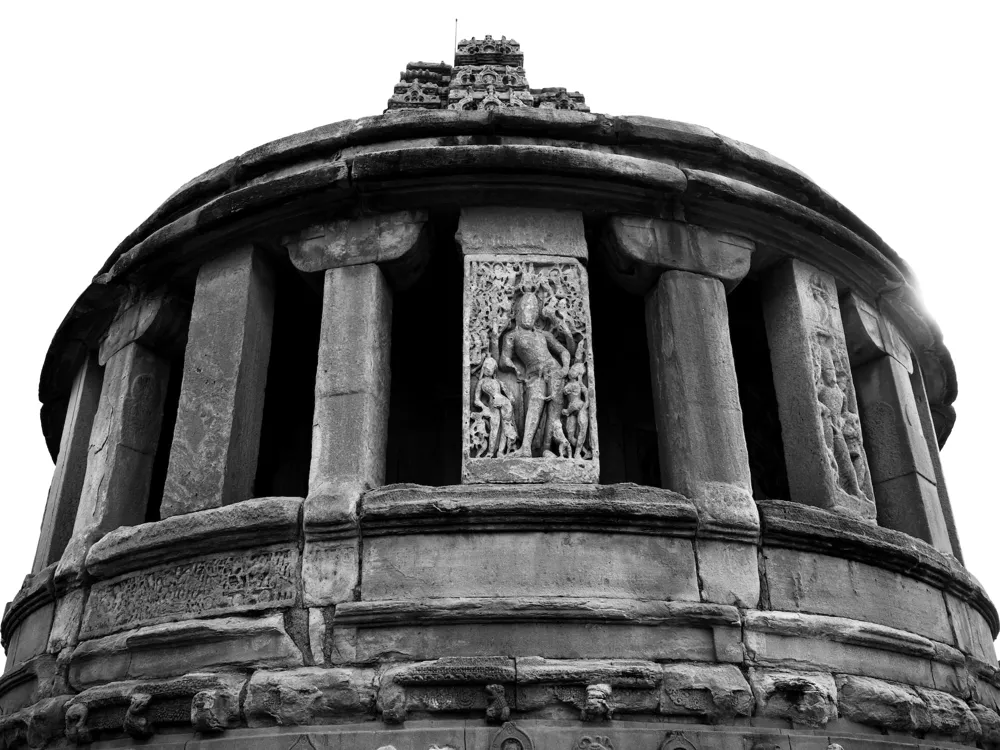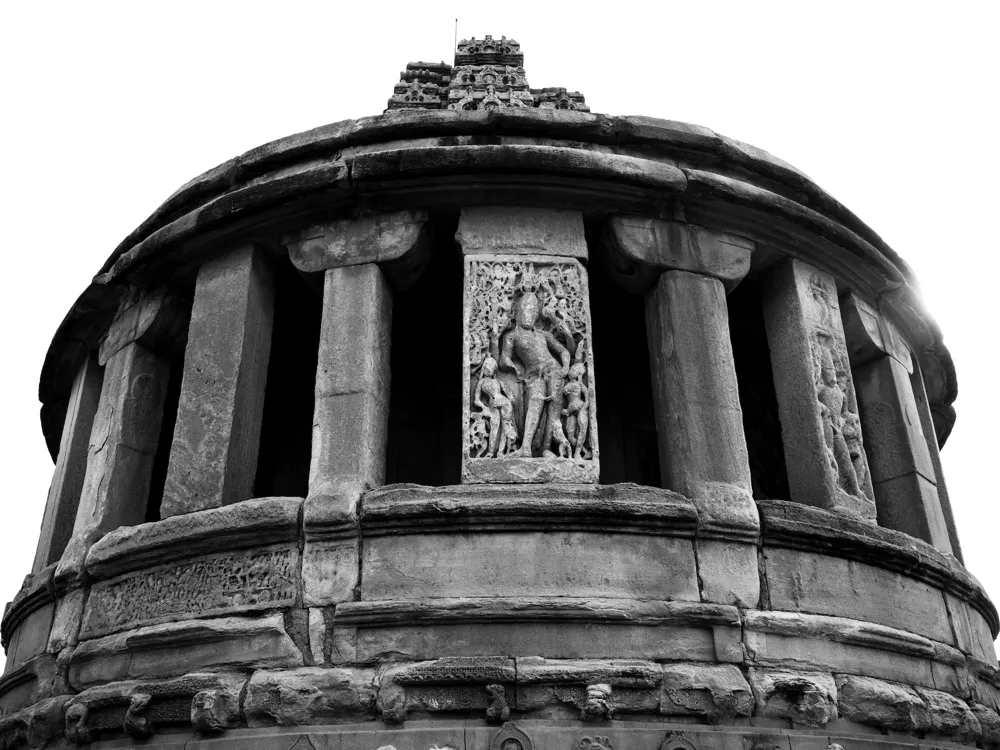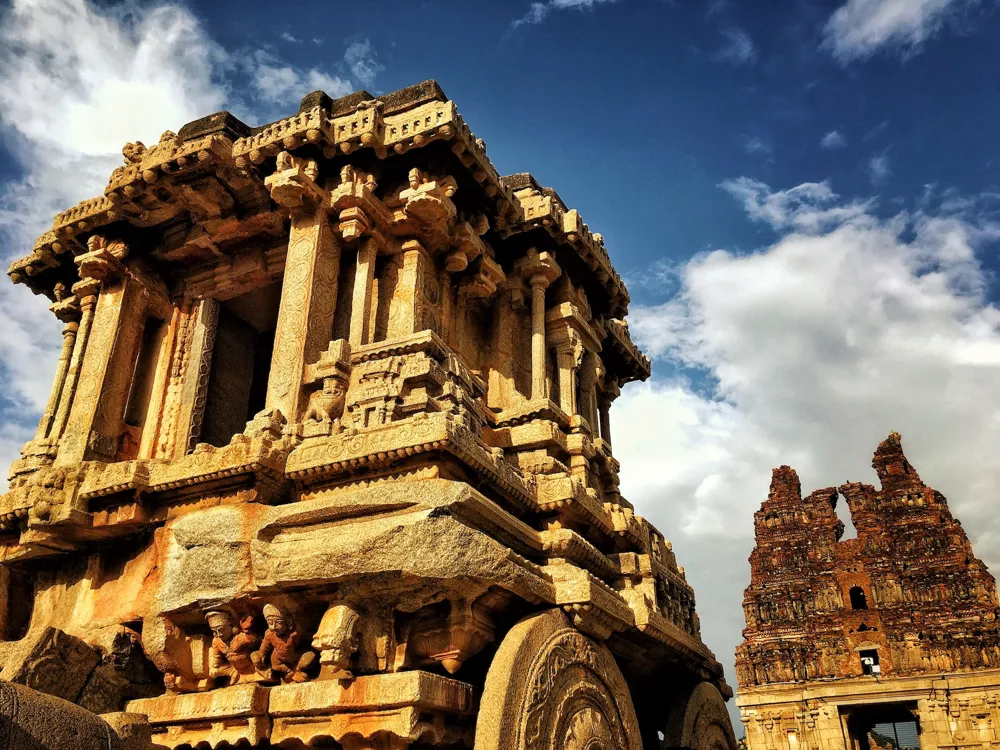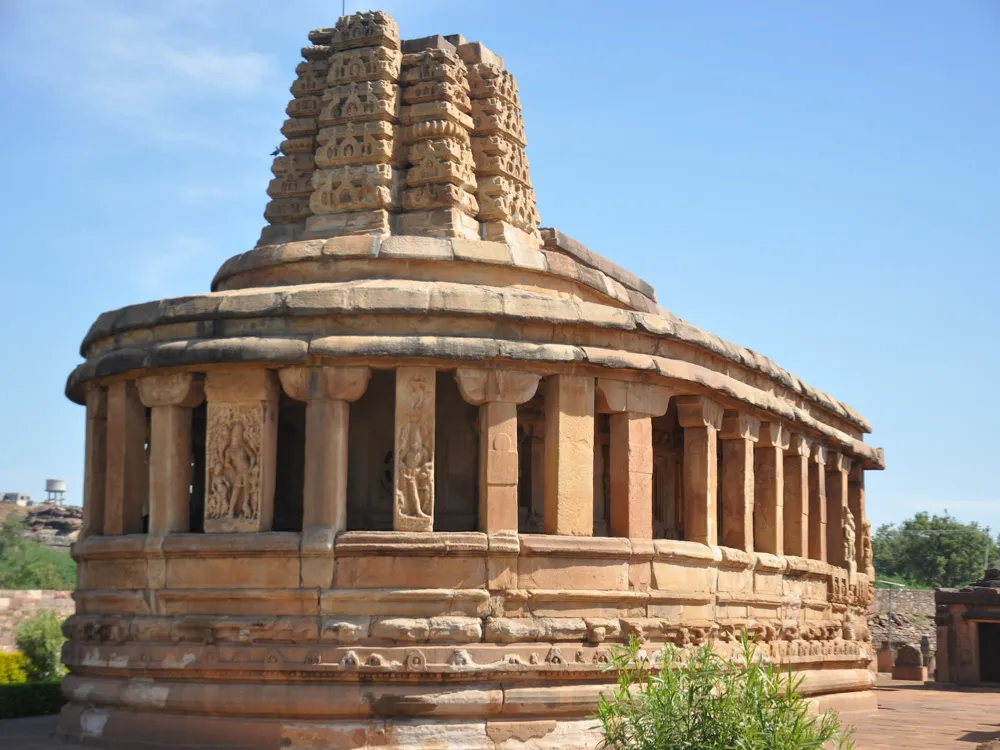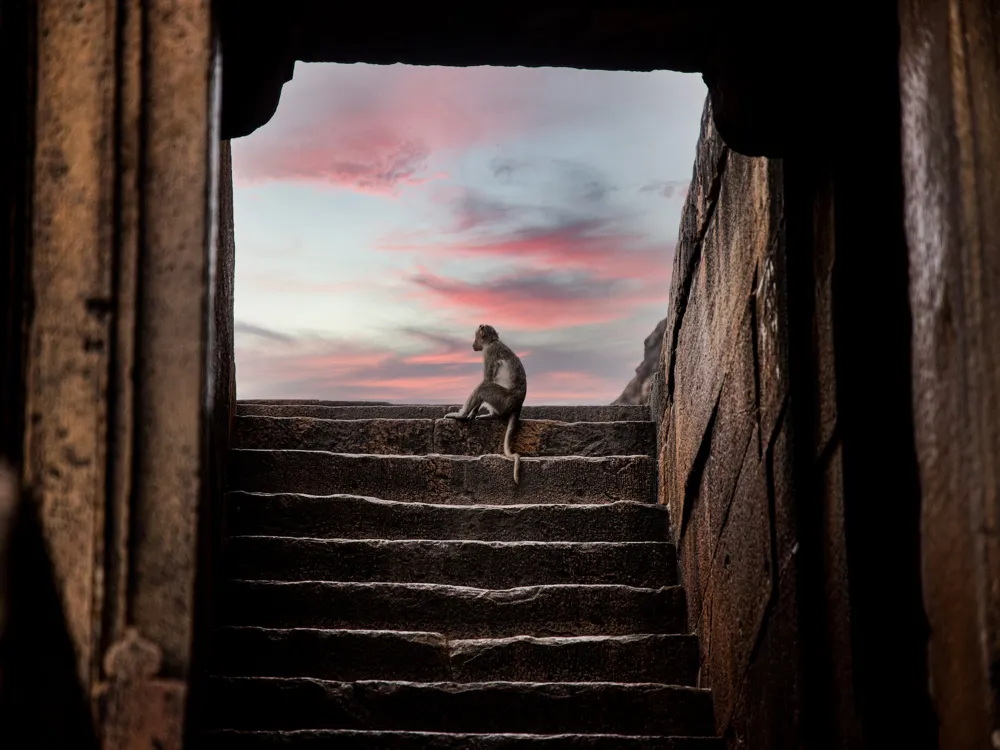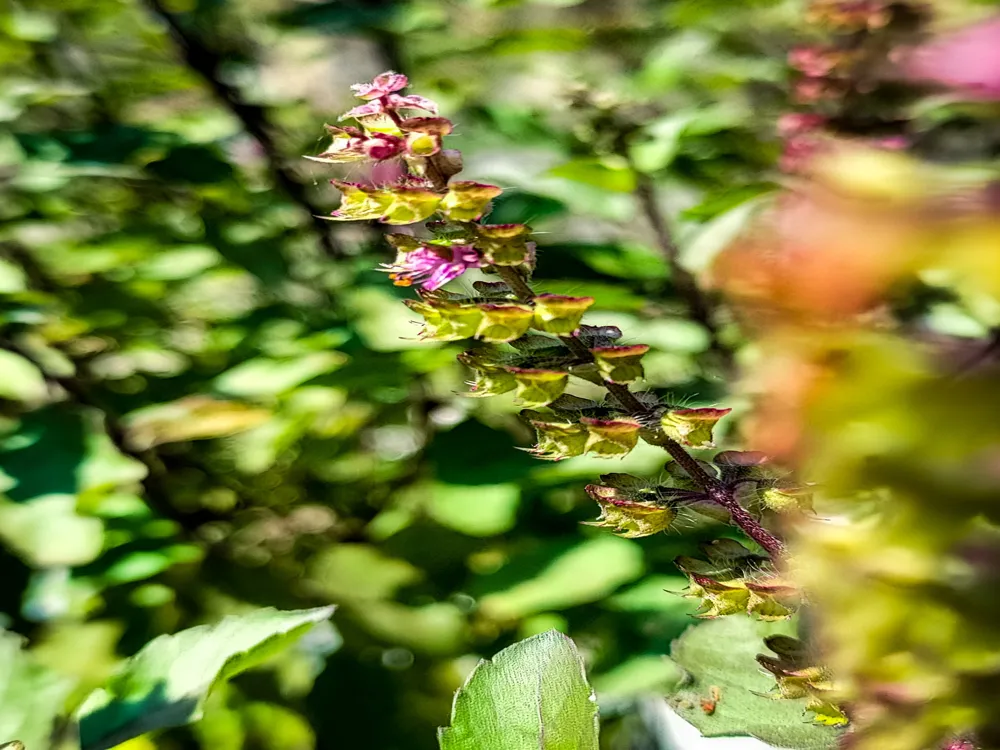Aihole, a historic town in Karnataka, India, is renowned for its remarkable architectural legacy, with the Jainagudis group standing as a testament to its ancient grandeur. This cluster of Jain temples, dating back to the 6th and 8th centuries, offers a window into the rich cultural and religious history of India. The Jainagudis group, part of Aihole's 125 stone temples, showcases exquisite craftsmanship and intricate design, making it a significant archaeological and spiritual site. These temples exhibit a blend of Dravidian and Gupta architectural styles, reflecting the diverse influences that shaped early Indian architecture. The meticulous carvings, sculpted pillars, and detailed friezes depict various aspects of Jain mythology, offering insights into the religious practices and artistic sensibilities of the time. The Jainagudis group, therefore, not only embodies religious significance but also represents a pivotal chapter in the evolution of Indian temple architecture. Visitors to the Jainagudis group are greeted with a serene atmosphere, away from the bustling city life. The temples stand surrounded by lush greenery, providing a tranquil setting for contemplation and appreciation of ancient artistry. This group of temples is a crucial component of Aihole's status as a UNESCO World Heritage Site candidate, highlighting its universal cultural value. Moreover, the Jainagudis group offers a unique educational experience for history enthusiasts, architects, and tourists alike. The temples serve as a live museum, illustrating the architectural skills and religious ethos of ancient India. The site's preservation and ongoing archaeological studies continue to unravel the mysteries of the past, making every visit a new discovery. The Jainagudis group of temples in Aihole is a masterpiece of Jain architecture, embodying the essence of ancient Indian temple design. These structures are characterized by their intricate carvings, ornate pillars, and symmetrical layouts. The architecture of the Jainagudis group is a harmonious blend of aesthetics, spirituality, and engineering, offering a profound insight into the architectural prowess of ancient India. One of the striking features of these temples is their detailed carvings, which depict scenes from Jain mythology, including the life of Tirthankaras and various celestial beings. The carvings are not just religious symbols but also serve as a testament to the artistic skills of the craftsmen of the era. The precision and depth of these carvings reflect a high level of sophistication in art and craftsmanship. The layout of the Jainagudis group follows a distinct pattern common in Jain temple architecture. The temples usually consist of a Garbhagriha (sanctum sanctorum), a Mandapa (pillared hall), and sometimes a Shikhara (tower). The Garbhagriha houses the idol of the Tirthankara, which is often made of polished stone, exuding a sense of calm and divinity. The pillars of the Jainagudis temples are another highlight, showcasing intricate patterns and motifs. These pillars are not just structural elements but are also adorned with sculptures and carvings, adding to the aesthetic appeal of the temples. The ceilings are often decorated with finely carved floral and geometric patterns, demonstrating the artisans' attention to detail. Moreover, the use of locally sourced materials in construction, such as sandstone and granite, adds to the temples' natural charm and durability. The choice of materials also reflects the ancient builders' understanding of their environment and their skills in working with different types of stone. In conclusion, the architecture of the Jainagudis group in Aihole is a remarkable example of ancient Indian temple architecture. Its intricate carvings, detailed sculptures, and thoughtful layout not only reflect the religious significance of the site but also highlight the advanced architectural skills of the era. A visit to these temples is a journey through time, offering a glimpse into the spiritual and artistic heritage of India. The ideal time to visit the Jainagudis group in Aihole is between October and March. During these months, the weather is pleasant, making it comfortable for tourists to explore the temples and surrounding areas. Visitors should dress modestly and maintain a respectful demeanor while exploring the Jainagudis group. It's important to remember that these temples are not only historical sites but also places of religious importance. Photography is generally allowed, but it's advisable to check for any specific restrictions or guidelines at certain temples within the Jainagudis group. Consider taking a guided tour to enhance your understanding of the site’s historical and architectural significance. Local guides can provide valuable insights and stories about the Jainagudis group. The Jainagudis group in Aihole is well-connected by road. The nearest major city is Hubli, approximately 140 kilometers away. Visitors can reach Aihole by taking a bus or hiring a taxi from Hubli or other nearby cities like Badami and Pattadakal. The nearest railway station is in Badami, and the nearest airport is Hubli Airport. Read More:Overview of Jainagudis Group of Aihole, Karnataka
Architecture of Jainagudis Group
Tips When Visiting Jainagudis Group
Best Time to Visit
Respecting the Site
Photography Guidelines
Guided Tours
How To Reach Jainagudis Group
Jainagudis group
Aihole
Karnataka
NaN onwards
View aihole Packages
Aihole Travel Packages
View All Packages For Aihole
Top Hotel Collections for Aihole

Private Pool

Luxury Hotels

5-Star Hotels

Pet Friendly
Top Hotels Near Aihole
Other Top Ranking Places In Aihole
View All Places To Visit In aihole
Faq on Aihole
What is Jainagudis group in Aihole?
The Jainagudis group in Aihole refers to a cluster of Jain temples and structures located in the historic town of Aihole in Karnataka, India.
How many temples are there in the Jainagudis group in Aihole?
The Jainagudis group in Aihole consists of around 14 temples and other structures, showcasing intricate architecture and historical significance.
When were the Jainagudis temples built in Aihole?
The Jainagudis temples in Aihole were built during the 6th to 8th centuries CE, during the Chalukya dynasty's rule in the region.
What is the architectural style of the Jainagudis temples in Aihole?
The Jainagudis temples exhibit a mix of architectural styles, including Chalukyan, Dravidian, and Nagara styles, showcasing the diverse influences prevalent during that era.
Are the Jainagudis temples in Aihole well-preserved?
While some of the Jainagudis temples in Aihole are well-preserved and maintained, others may show signs of weathering and deterioration due to their age and exposure to the elements.
View aihole Packages
Aihole Travel Packages
View All Packages For Aihole
Top Hotel Collections for Aihole

Private Pool

Luxury Hotels

5-Star Hotels

Pet Friendly
Top Hotels Near Aihole
Other Top Ranking Places In Aihole
Faq on Aihole
What is Jainagudis group in Aihole?
The Jainagudis group in Aihole refers to a cluster of Jain temples and structures located in the historic town of Aihole in Karnataka, India.
How many temples are there in the Jainagudis group in Aihole?
The Jainagudis group in Aihole consists of around 14 temples and other structures, showcasing intricate architecture and historical significance.
When were the Jainagudis temples built in Aihole?
The Jainagudis temples in Aihole were built during the 6th to 8th centuries CE, during the Chalukya dynasty's rule in the region.
What is the architectural style of the Jainagudis temples in Aihole?
The Jainagudis temples exhibit a mix of architectural styles, including Chalukyan, Dravidian, and Nagara styles, showcasing the diverse influences prevalent during that era.
Are the Jainagudis temples in Aihole well-preserved?
While some of the Jainagudis temples in Aihole are well-preserved and maintained, others may show signs of weathering and deterioration due to their age and exposure to the elements.








